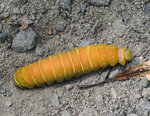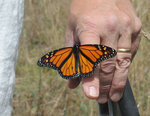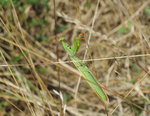 Narrowsburg
NarrowsburgLight Rain Fog/Mist, 43°
Wind: 8.1 mph
 Narrowsburg
NarrowsburgLate August and early September elicit a variety of insect life, aside from the usual pesky biting types. During this time of year, seasonal insects are likely to be mature, as it is late in their …
Stay informed about your community and support local independent journalism.
Subscribe to The River Reporter today. click here
This item is available in full to subscribers.
Please log in to continue |



Late August and early September elicit a variety of insect life, aside from the usual pesky biting types. During this time of year, seasonal insects are likely to be mature, as it is late in their growth cycle. They will be easier to find. The insects that are preparing to overwinter in leaf litter, in a crevice, or another shelter are likely in their larval stage. A lot of these are small and barely visible, but others have a very conspicuous appearance.
Some insects, such as the monarch butterfly, start their southward migration at this time. Some of them fly hundreds of feet off the ground, others skim just above the bushes; they will stop at areas with flowering plants to feed on nectar to sustain their long trip to Mexico. The monarch chrysalises found in gardens and yards will soon emerge and join their brethren for the trip south.
Dragonflies are still flying about, consuming mosquitos and other flying pests, and some species are breeding. The amberwings and many other species have a long summer flight, but new species are making their appearance now. The autumn meadowhawk, a strikingly dark-red dragonfly, makes its debut now and will appear well into autumn, hence its name.
Like other plants and animals, different insects will be found in different habitats. The true katydids (yes, that’s their name) start sounding in early August in many deciduous forests. Other katydids, such as the field katydid, prefer meadows and have a less conspicuous call than the night time calls of the true katydid.
The images for this week’s column were all found in the span of 90 minutes in a deciduous forest habitat that bordered a grassy meadow.
Comments
No comments on this item Please log in to comment by clicking here